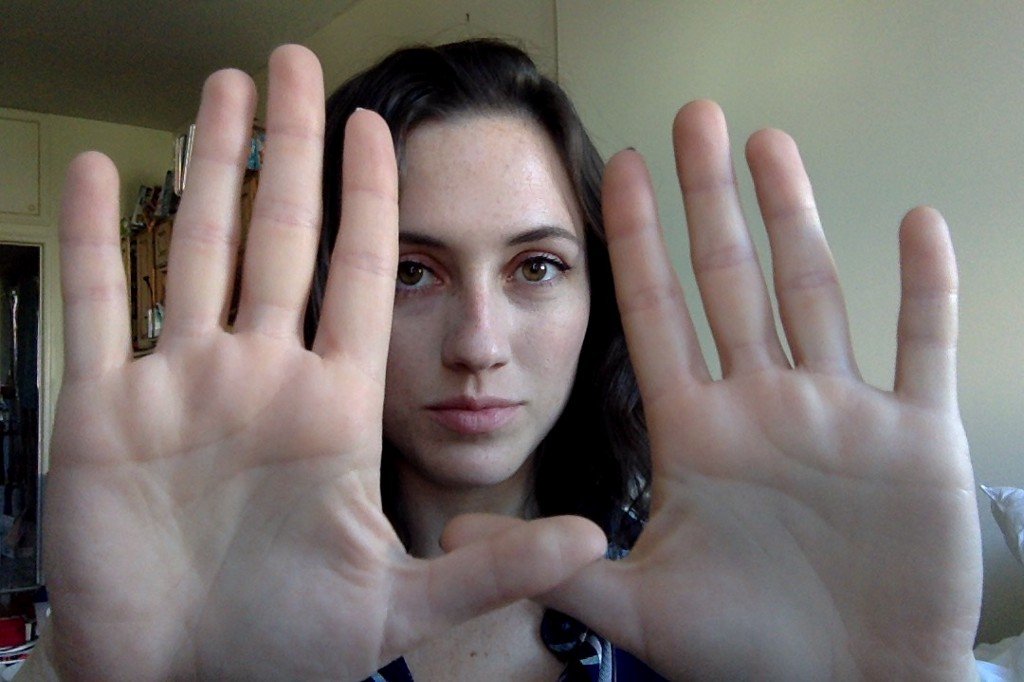What the hell do you do about calluses? I pumice mine in the shower & sometimes use an emery board to try to smooth them out but they are still gnarly. Are they just unavoidable? Will I never have soft lady hands ever again? It’s badass, sure, but sometimes I miss having nice smooth skin :( — Margaret
Calluses happen from gripping stuff (barbells, dumbbells), and you can’t 100% avoid them. Here I could tell you tell you to just embrace having the hands of a seventeenth-century whaler. But bad calluses can tear, which can leave you with bloody hands and open wounds that will come in contact with a lot of gross gym equipment and I’m gagging a little just thinking about it. I’ve been doing this stuff for a while, I had deadlift day two days ago, and here are my hands:
I have a few visible flakes on my left hand, and sometimes they are in slightly worse shape than this, but I have very little in the way of built-up calluses, and my hands are actually still pretty smooth and soft. Yes, it is true; you can have hands soft enough that another human being won’t recoil from your touch, AND do deadlifts. Or anything else.
The number one way to not have hand-skin that could scrub down a cast-iron pan has to do with prevention, not maintenance. If you have insane calluses, you are likely gripping the barbell wrong.
Mark Rippetoe’s Starting Strength, which is an amazing resource for lifting basics, goes into this a bit:
“Calluses are bad only if they are excessive, and gripping the bar incorrectly causes excessive callus formation. Most lifters do this and have never considered the role of the grip in callus formation…
When you’re setting the grip, if you place the bar in the middle of your palm and wrap your fingers from there, a fold forms at the distal end of your palm, right before the area where your fingers start. When you pull the bar up, gravity shoves this fold farther down toward your fingers, increasing the folding and stress on this part of the skin. A callus forms here as a result, and the presence of the callus amplifies the folding problem by making the fold even thicker. If you grip the bar farther down toward your fingers to begin with, it can’t slide down much because it’s already there. This is actually where the bar needs to be, since gravity will pull it there eventually. And since the bar should stop there anyway, you might as well start in this position. You also get the advantage of having less far to pull the bar; if it is farther down in your fingers, then your chest is up higher, your position off the floor is easier, the bar locks out farther down your thigh, and the bar has a shorter distance it has to move before being locked out.”
This may be a little hard to envision, but basically, when you align the bar so it sits in the hollow part of your hand and crook of your thumb, the weight of the bar will shove all that extra skin-padding at the base of your fingers up toward your fingertips once you pick it up. Giving the bar that space to roll in your grip will also allow it to roll against the rest of your fingers; hence, calluses.
Instead, you should align the bar and dig it into that padding right below your fingers first, then wrap your fingers around it, then your hand. It may feel unusual at first, but this way the bar can’t slide in your hands. If it can’t slide, your calluses will be negligible. This gripping technique applies the same to dumbbells, or pull-ups. In any case, be conscious of your grip, since it plays a big role in how much a bar can tear your hands apart.
One more thing: don’t wear gloves to lift hoping they will prevent your calluses. They are a rip-off and don’t do anything but introduce more opportunities for slippage.
This post originally ran at The Hairpin.

